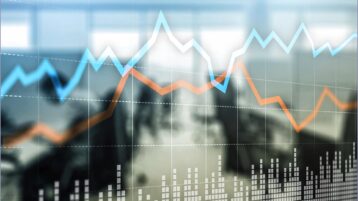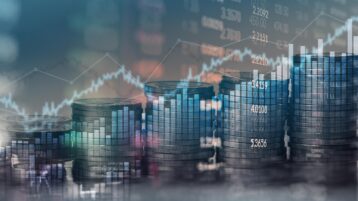A week from now OPEC+ will start introducing almost half a million barrels of oil per day into the market. Kim Parlee speaks to Hussein Allidina, Head of Commodities, TD Asset Management, about the impact of oil prices on markets and the broader economy.
Print Transcript
- And we've seen oil prices come down quite a bit just because, I guess, the concern of that supply coming on the market. But you don't think that's going to solve the demand problem.
- Yeah, Kim, thanks for having me. Look, I think the weakness that we have seen in oil prices came at a maybe unfortunate time. We saw the yield curve flattening, we saw bond yields crashing to lower levels, and that all happened at the same time that OPEC had their OPEC+ meeting. Ultimately, they did decide, as you mentioned, that they will be growing production effective August 1 by 400,000 barrels a day each month through September '22.
I don't think that's enough. When you take a look at the change in demand that is expected into the second half of the year, the International Energy Agency is forecasting a demand increase of 4.6 million barrels a day between the first half and the second half. So definitely the incremental OPEC barrels help, but only on the margin. And I anticipate that we will continue to see pretty material draws in inventories through most of the second half of this year.
- What about the Delta variant's impact on demand? Does that estimate of demand include what could happen? Any concern there?
- Yeah, very good question. So there are concerns, obviously, around Delta. I think part of the move that we're seeing in the rates market is a reflection of that, as well as risk assets in general. I think what's different-- and I'm not a doctor, so I don't want to pretend like I know-- but what's different from the data that we're looking at is that, notwithstanding the fact that the case count is rising, hospitalizations and, more importantly, deaths are staying relatively low.
And that's particularly true in populations that have been vaccinated. So I don't want to discount the risk to demand if the Delta variant gets materially worse. If we look at the demand forecast that I mentioned-- the 4.6 million barrels a day increase that we're going to see in the second half-- a lot of that, a lion's share of that is coming from the OECD, where we have a higher rate of vaccination.
There is some growth modeled in non-OECD economies in the emerging markets. But the bulk of the growth is coming from the OECD. So I think the forecasts, to be frank, are relatively balanced going forward.
- So what does that forecast, then, mean for prices? Where do you see things going?
- Yeah, so inventories continue to draw. You see that in the shape of the crude oil curve. That's why crude is trading at backwardation. I think that oil prices can probably trade to the high-70s, low-80s absent any sort of disruption on either the supply or demand side. I think potentially the more interesting story, and I think the part that the kind of market is not focused on, is what happens to these balances as we get into 2022, 2023, and onwards.
And we've talked about this before, Kim, but there's been a material lack of investment on the supply side. And I think that supply side starts to bite. We don't expect as much production growth out of non-OPEC this year and into the future. And I think that becomes a challenge, because we're not moving away from the demand side fast enough.
So we've stopped investing in the supply side. We still continue to require a tremendous amount of oil to generate GDP. And GDP is expected to continue to grow into year-end and through '22.
- It seems like a lot of this is just-- and we have talked with this-- that gap between people saying, look at a few years with ESG, oil is not going to be used. But there's a transition time where it could get a little bit bumpy.
- Yeah, if I can bore you with some numbers-- if you take a look at oil demand in aggregate, about 2/3 of all the oil that is consumed globally is used in transportation. So if we're going to wean ourselves off of oil, we really have to address transportation. And we have started to do that, for sure.
But even today if I look at the global auto fleet, there's about 1.3 billion vehicles on the road. Less than 1% of those vehicles today are electric vehicles. From a sales point of view, roughly 4% of all the vehicles that are sold globally today are EVs. So it's, frankly, a drop in the bucket for the oil market.
Even when we look at projections for 2030 and 2035, sales are expected to reach 30% of total sales. So we'll be selling in 2030 30% of all vehicles that are electric vehicles. That doesn't address the existing fleet. I still drive a gasoline vehicle. Most people still do. Frankly, 99% of the people in the world are still using conventional gasoline or diesel in their cars.
And we've stopped investing on the supply side. The demand is still there. And I worry that there's the potential for markedly higher prices in the 2 to 5 year window as inventories continue to draw down, OPEC spare capacity draws down, and non-OPEC supply does not respond.
- I've only got about 30 seconds, but I feel like I need to ask this question. But what does this all mean for Canada's energy sector? I'll just pause-- you tell me what you see maybe in the short and medium-term.
- Yeah, sure. So I think higher oil prices on net are positive for energy producers in general, Canada included. Canadian producers have a slightly higher cost of production. So there is some operational leverage that they'll garner as oil prices move higher. But the Canadian energy landscape is challenged owing to stuff that we've talked about before-- takeaway capacity, the lack of adequate pipeline capacity, making realizations at the wellhead lower, and a relatively uncertain climate.
When I think about energy equities versus energy the commodity, I believe energy the commodity outperforms. And it outperforms largely because some of the things that are not happening, frankly, on the energy equity side-- the lack of investment is really core to the view that energy prices move higher and if these companies that are simply not making the investment, not necessarily because they don't want to, but because they're being punished by shareholders for making those investments.
- It's an interesting time. I'm glad you're here to help guide us through it. Hussein, thanks very much.
- Thank you for having me.
[MUSIC PLAYING]
- Yeah, Kim, thanks for having me. Look, I think the weakness that we have seen in oil prices came at a maybe unfortunate time. We saw the yield curve flattening, we saw bond yields crashing to lower levels, and that all happened at the same time that OPEC had their OPEC+ meeting. Ultimately, they did decide, as you mentioned, that they will be growing production effective August 1 by 400,000 barrels a day each month through September '22.
I don't think that's enough. When you take a look at the change in demand that is expected into the second half of the year, the International Energy Agency is forecasting a demand increase of 4.6 million barrels a day between the first half and the second half. So definitely the incremental OPEC barrels help, but only on the margin. And I anticipate that we will continue to see pretty material draws in inventories through most of the second half of this year.
- What about the Delta variant's impact on demand? Does that estimate of demand include what could happen? Any concern there?
- Yeah, very good question. So there are concerns, obviously, around Delta. I think part of the move that we're seeing in the rates market is a reflection of that, as well as risk assets in general. I think what's different-- and I'm not a doctor, so I don't want to pretend like I know-- but what's different from the data that we're looking at is that, notwithstanding the fact that the case count is rising, hospitalizations and, more importantly, deaths are staying relatively low.
And that's particularly true in populations that have been vaccinated. So I don't want to discount the risk to demand if the Delta variant gets materially worse. If we look at the demand forecast that I mentioned-- the 4.6 million barrels a day increase that we're going to see in the second half-- a lot of that, a lion's share of that is coming from the OECD, where we have a higher rate of vaccination.
There is some growth modeled in non-OECD economies in the emerging markets. But the bulk of the growth is coming from the OECD. So I think the forecasts, to be frank, are relatively balanced going forward.
- So what does that forecast, then, mean for prices? Where do you see things going?
- Yeah, so inventories continue to draw. You see that in the shape of the crude oil curve. That's why crude is trading at backwardation. I think that oil prices can probably trade to the high-70s, low-80s absent any sort of disruption on either the supply or demand side. I think potentially the more interesting story, and I think the part that the kind of market is not focused on, is what happens to these balances as we get into 2022, 2023, and onwards.
And we've talked about this before, Kim, but there's been a material lack of investment on the supply side. And I think that supply side starts to bite. We don't expect as much production growth out of non-OPEC this year and into the future. And I think that becomes a challenge, because we're not moving away from the demand side fast enough.
So we've stopped investing in the supply side. We still continue to require a tremendous amount of oil to generate GDP. And GDP is expected to continue to grow into year-end and through '22.
- It seems like a lot of this is just-- and we have talked with this-- that gap between people saying, look at a few years with ESG, oil is not going to be used. But there's a transition time where it could get a little bit bumpy.
- Yeah, if I can bore you with some numbers-- if you take a look at oil demand in aggregate, about 2/3 of all the oil that is consumed globally is used in transportation. So if we're going to wean ourselves off of oil, we really have to address transportation. And we have started to do that, for sure.
But even today if I look at the global auto fleet, there's about 1.3 billion vehicles on the road. Less than 1% of those vehicles today are electric vehicles. From a sales point of view, roughly 4% of all the vehicles that are sold globally today are EVs. So it's, frankly, a drop in the bucket for the oil market.
Even when we look at projections for 2030 and 2035, sales are expected to reach 30% of total sales. So we'll be selling in 2030 30% of all vehicles that are electric vehicles. That doesn't address the existing fleet. I still drive a gasoline vehicle. Most people still do. Frankly, 99% of the people in the world are still using conventional gasoline or diesel in their cars.
And we've stopped investing on the supply side. The demand is still there. And I worry that there's the potential for markedly higher prices in the 2 to 5 year window as inventories continue to draw down, OPEC spare capacity draws down, and non-OPEC supply does not respond.
- I've only got about 30 seconds, but I feel like I need to ask this question. But what does this all mean for Canada's energy sector? I'll just pause-- you tell me what you see maybe in the short and medium-term.
- Yeah, sure. So I think higher oil prices on net are positive for energy producers in general, Canada included. Canadian producers have a slightly higher cost of production. So there is some operational leverage that they'll garner as oil prices move higher. But the Canadian energy landscape is challenged owing to stuff that we've talked about before-- takeaway capacity, the lack of adequate pipeline capacity, making realizations at the wellhead lower, and a relatively uncertain climate.
When I think about energy equities versus energy the commodity, I believe energy the commodity outperforms. And it outperforms largely because some of the things that are not happening, frankly, on the energy equity side-- the lack of investment is really core to the view that energy prices move higher and if these companies that are simply not making the investment, not necessarily because they don't want to, but because they're being punished by shareholders for making those investments.
- It's an interesting time. I'm glad you're here to help guide us through it. Hussein, thanks very much.
- Thank you for having me.
[MUSIC PLAYING]



























